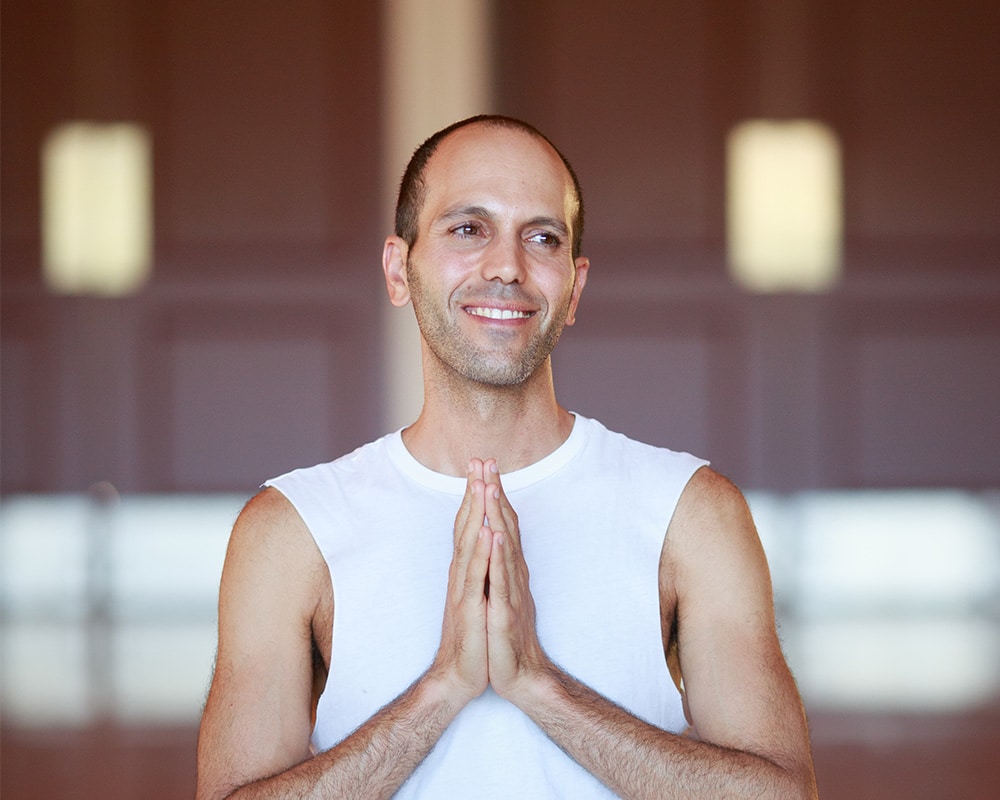Perhaps the most famous words ever written about yoga are in the second sutra of Patanjali: yoga is the cessation of the fluctuation of mind. Well, let me (perhaps) be the first to say: no. That’s not it.
In The Places that Scare You, Pema Chodron imagines a conversation with the Buddha in which he asks us how we perceive reality, and no matter what answer we offer (it’s solid and separate from me, it’s empty, it’s simultaneously solid and empty, it’s neither solid nor empty), the Buddha just keeps saying: “No, that’s too limited an understanding”. (140)
On this level, anything we can say about yoga (or about consciousness, enlightenment, or the nature of reality) is ultimately wrong, since all language is limited within relative, temporal mental constructions, while reality is completely free of definition and the possibility of definition. Still, to think of yoga as “the cessation of the fluctuation of mind” can be dangerously misleading.
The fundamental point is that, in reality, nothing that can be defined as mind (or actually as anything at all) needs to – or even can – cease. And if we carry on with the assumption that something (e.g., thinking) needs to stop in order for us to see reality as it is, we will miss the forest for the trees. Anyone who has ever had any insight into yoga or the ultimate nature of reality (including Siddhartha Gotama) has wandered around and gotten lost while looking for something that, by definition, cannot be found; until the search comes to an end with the realization that the truth is not outside of us nor far away. Nor would it be enough to say that it is near. It is closer than close. It is who and what we are.
I know I sound a bit like Yoda, but bear with me.
I hear it all the time. I can’t meditate. I can’t make my thoughts stop. That’s why I wrote the article Meditation: Not What You Think. The key insight there is that we are wasting our time and hindering ourselves in trying to stop our thoughts, because we are thus essentially rejecting a part of reality and saying: this is not reality, this needs to cease in order for me to see reality. It’s like fighting fire with fire. Or getting angry at ANGER.
In his so-called “Remix of Patanjali’s Yoga Sutras”, Threads of Yoga, my colleague Matthew Remski argues that the sutras of Patanjali are at once beautiful and outdated, still useful and yet mired in bias like a text written by men in India centuries ago cannot help but be. As a contemporary alternative, Matthew offers a beautiful rethinking of the most famous sutra: yoga happens in the resolution of consciousness.
That feels closer. It especially resonates if we think of “happens” not as an event in time, but as the very nature of reality, an eternal happening that is existence itself. If you are wondering what you need to do to become enlightened, or why you are not enlightened yet, you are confusing enlightenment with an event in time. It will never happen in the future because nothing ever does. Everything just is, right now. And the “unenlightened” or suffering mind is merely a rejection of what is now. Nor can you “get rid of” the rejecting mind, because this is just more rejection.
The Indian Sage Jiddu Krishnamurti famously said, you want to know what my secret is? You see, I don’t mind what happens. “What happens” here refers to all of reality as we normally perceive it – all that appears to be impermanent and to change with time – the body, the mind, the world. To borrow a metaphor from Rupert Spira, “what happens” is like the movie playing on the screen. And I am not a character in the movie, nor even the one who watches the movie. I, consciousness, am the screen.
And the screen doesn’t “mind what happens” in the movie. The screen doesn’t reject this or that scene, doesn’t dislike this or that character. While the screen doesn’t “think” or “feel” in the sense that we normally understand these activities, we can metaphorically say that it “knows” itself to be the ultimate and only reality of the movie. While the screen does not literally “act”, it recognizes the movie as its own activity.
In another, more traditional metaphor, Rupert Spira likens reality to a dream. While a dream may appear to be full “other” people and brimming with pleasant and unpleasant experiences, upon awakening it all reveals itself to be merely an activity of the dreamer’s mind. In a dream we even experience ourselves as a character within the dream. Similarly, most of us spend our lives trying to make reality more pleasant for the character that we think we are, never realizing that we are the source and the essence of the entire reality, and that therefor we do not need to mind what happens. We are already peace.
In Exodus 3:13-14, Moses overcomes his famous meekness and finds the audacity to ask God for his name, so that he can tell the Hebrews who has sent him; and God responds, I AM THAT I AM… say to the children of Israel, I AM has sent me to you. The unpronounceable YHWH, the name of God in written Hebrew, is a contraction of the words for was, is, and will be (haya, howe, yihye), thus meaning something like The Eternal. The identity of that which has always been and will always be, is the very fact of being: I am that I am. This is closer yet to defining yoga.
To my knowledge, only one person has ever come closer than God in Exodus 3:14 to expressing yoga in words. Though perhaps less eloquent, and certainly less grammatically correct, Advaita master Ramana Maharshi chosen words for yoga were only: I, I. It’s like the mathematical formula version of God’s words. Drop all unnecessary particles.
I = I
So what is yoga? The Oracle of Delphi put it most clearly: gnothi seauton. Know Thyself. Emblazoned upon the gates of its Temple of Apollo for centuries, the ancient Oracle still enjoins us to recognize ourselves in an as the eternal consciousness within which all appearances arise, made of nothing but consciousness, like an activity of consciousness. It beckons us to discover that we are the screen, and thus also the movie and every character with in. It bids us awaken to know ourselves as the dreamer of the dream, as its source and its only essence. A contemporary and more in vogue term for yoga in this sense is authenticity.
Yet to understand yoga is to understand authenticity as more than just being ourselves. In fact, we are are always ourselves, can’t help but be ourselves, and can’t possibly be anything other than ourselves. Drawing again from the teachings of Rupert Spira, we can think of yoga as being knowingly ourselves. We can be and act in the world as and on behalf of who we actually are: the essential nature of reality, eternal consciousness. And the fundamental nature of this one consciousness is love and compassion, in the sense of recognizing everyone and everything as who I essentially am, and thus wishing only happiness and relief of suffering for all of these reflections of me who are still dreaming that they are separate and temporary, and doing everything I can to bring peace and happiness to all.
Matthew Remski starts his Threads of Yoga “remix” with the words: we all inquire into Yoga. To practice yoga is to inquire into who I am, beyond the apparent limitations of identification with the body and the mind. Whatever I think or feel that I am, to practice yoga is to inquire into that, to explore it with the wish to dissolve all illusions and misidentifications until the truth of Oneness shines perfectly clear. And it is also to act in the world with love and compassion, seeking to feel the pain of “others” and to shoulder their burdens until every part of me is awake and free.
So yoga is not the cessation of anything. Nor do we need to stop thinking in order to inquire into yoga. We need only notice that there is and always has been the presence of awareness in all of our experiences, and to recognize ourselves as that awareness. We can recognize that there is someone or something that experiences all that I experience, that knows all experience, and yet is completely undisturbed by it. And this knowing presence is that which each of us calls I.
As we turn our attention towards itself, towards its source, and simply spend time with ourselves, we sooner or later become free of illusion and misidentification. Whether awareness is aware of a quiet or agitated mind, a pleasant or unpleasant event, a beautiful or ugly world, Awareness just remains aware, like the screen on which the movie of Life plays.
And all of these are also just words, so the Buddha might still say: no, that’s too limited an understanding. The mind is a flow of thoughts, sensations and perceptions with which we have identified, but which in reality is just another object of consciousness, no different in essence than the body and the world, nor “other” to them. The mind cannot know consciousness, to borrow a metaphor from English fantasy writer Terry Pratchett, for the same reason that someone standing in Piccadilly Circus can’t see London.
So to practice yoga all we need to or even can ever do, is follow the ancient Hebrew saying that has come to be known as the Golden Rule: love the “other” as yourself – now go inquire.







